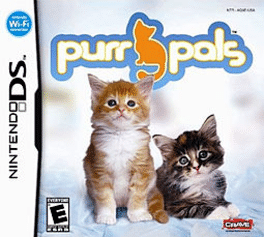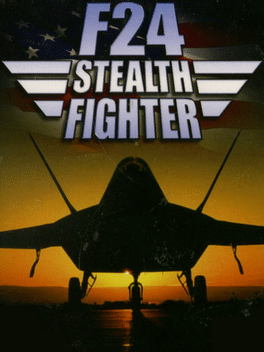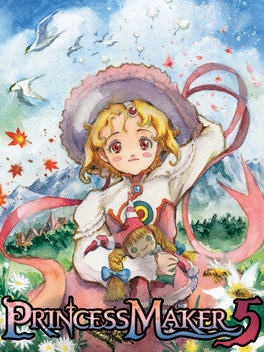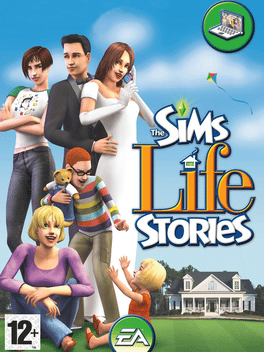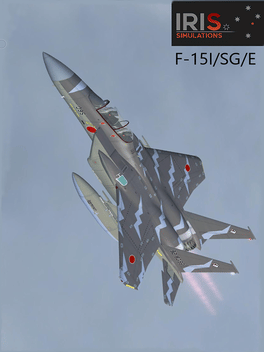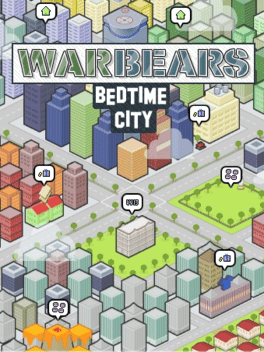New Simulator Games - Page 312
-
Purr Pals
2007
Purr Pals
2007
Purr Pals is a pet simulation game in which the player takes care of a kitten. It is Crave Entertainment's answer to Nintendo's Nintendogs and is sponsored by Purina. -
Theme Park
2007
Theme Park
2007
star 6.3Based on the popular simulation game series, Theme Park will allow players to create, manage, and develop their own fun-filled park, packed with amazing rides, enticing shops and engaging sideshows, all via an intuitive Touch Screen interface. -
Lets Ride Corral Club
2007
Jump in the Saddle to Win the Blue Ribbon! This is your chance to own and care for the horse of your dreams! Select your horse, choose your riding outfits and even decorate your horse for the rodeo events. Practice at the corral to perfect your barrel racing technique. Train hard to make it to the most prestigious competitions, and win the National Championship. -
F24: Stealth Fighter
2007
F24: Stealth Fighter
2007
Intelligence reports indicate that Iran is looking to conduct offensive air operations within the No Fly Zone. As an F24 fighter pilot you must eliminate the enemy, rescue international leaders and secure diplomacy in the Middle East. -
Tarr Chronicles
2007
Tarr Chronicles
2007
In Tarr Chronicles humanity is at war with an alien race. The player flies a space ship and is part of an expedition to retrieve an important artifact but just before the goal they get attacked by aliens. -
Princess Maker 5
2007
Princess Maker 5
2007
star 5Welcome to the world of 「Princess Maker 5」! The stage of 「Princess Maker 5」 is the world we are living in now. There is not only a TV, but we use the cellphone and the Internet as well. But something is a bit different than those. It's a world where the demons and fairies are living together. And for you living in such world comes an orphan girl by nature. This girl was the only Princess candidate survivor of the Kingdom that you served in the past. At that time, you decided to take the girl and raise her as your daughter. And your and your daughter's story starts. -
Pawly Pets: My Vet Practice
2007
Do you sometimes dream of being a vet doctor? With the game My Vet Practice this dream can come true. Build up your own practice, decide when to build which building and which patient to treat. Every day people come to you with their animals, guinea pigs, rabbits, budgerigars, cats, dogs and even horses. Sometimes it can even be necessary to accommodate the animals and take care of them for a couple of days, so that they get well and happy again quickly. Therefore you can build extra stables and accomodations. Feeding, playing with the pets, bear company, but also cleaning up and the daily treatment are your duties. For very demanding horse-patients, you can experience interesting things about horse whispering. But although the work with pets is a lot of fun, even the best vet doctor needs some time out. Then you take your own horse and go for a long ride at the beach, on meadows and fields or through the nearby forest. Stock up new energy to become the best vet doctor of all time. -
Densha de Go! Shinkansen EX: Sanyou Shinkansen-hen
2007
A spin-off of the Densha de Go! series, Shinkansen focuses on the titular high-speed rail line San'yō Shinkansen (through the entire route both ways, between Shin-Ōsaka and Hakata). The game was later ported to the Wii as Densha de Go! Shinkansen EX: Sanyoushinkansen-hen (loosely translated to "Go by Train! Shinkansen EX: Sanyou Shinkansen Edition") on March 1, 2007. This version features a new "Kids Mode" utilizing the Wii Remote's motion control. -
Air Traffic Chaos
2007
Air Traffic Chaos
2007
star 6Air Traffic Chaos is an air traffic controller simulation video game developed and published by Majesco Games for the Nintendo DS handheld video game console. It has previously been released in Japan under the name ぼくは航空管制官 (I Am An Air Traffic Controller), and later in Europe under the title Air Traffic Controller by DS. A video game demo was made available before its release for the Wii's Nintendo Channel. Air Traffic Chaos involves the player taking control of an airport control tower for a period. During this period the player needs to achieve a certain score based on orders given to planes and safe take offs and landings. The game has a total of 15 challenges.[1] The airports in Air Traffic Chaos are all 5 international and domestic Japanese airports. They are: Fukuoka Airport Kansai International Airport Chubu Centrair International Airport Tokyo International Airport New Chitose Airport [1] These each have 3 stages ranging from easy, medium and expert difficulty. Each stage increases in di -
Tokimeki Memorial Girl's Side: 1st Love
2007
Although the Tokimeki Memorial series was originally male-oriented, this game is directed toward the female market and involves a female protagonist looking for love amongst a cast of male characters as she goes about high school life at Habataki Academy. Some modifications in game-play were also made to make the game more appealing to female gamers. The player is able to go shopping on her free days to buy clothes and is able to change her daily attire as well as dressing-up for a date. In addition to the male love-interest characters, there are also female characters who can become the player's friends, study together, go out for coffee, etc. These characters can also become love rivals. The parameters which are built up through different activities include academic ability, art, popularity, sport, attentiveness and beauty. -
Jet Impulse
2007
Jet Impulse
2007
Jet Impulse, known outside of Japan as the working title DS Air but never released there, is a Nintendo DS amateur flight simulation game. -
Cooking Mama: Cook Off
2007
star 6.3Cooking Mama is the follow-on game after the Nintendo DS Cooking Mama game. This time mama teaches you to cook up some delicious international dishes from 10 different countries. After you've mastered your skills you'll want to see how you fair against some of the other chefs out there. With multiplayer you can cook against a friend to see who really is the grill master. With the unique controls of the Wiimote, you use it to actually move utensils to "cook." -
The Sims 2: Life Stories
2007
The Sims 2: Life Stories is a stand-alone entry in The Sims franchise, designed to be more accessible and optimized for laptops. Unlike the open-ended structure of The Sims 2, it introduces narrative-driven scenarios with set goals and events to guide players through structured stories. The game also includes a Classic mode, which restores the sandbox-style gameplay of The Sims 2, though with simplified features and lower system requirements to ensure smoother performance on less powerful computers. It is the first title in the Sims Stories series. -
Microsoft Flight Simulator X: Iris F-15E/I/SG
2007
An addon for Microsoft Flight Simulator X. This addon is also compatible with Prepar3D. You can download from fs-freeware.net. This specific version contains: F-15E Strike Eagle F-15I Ra'am F-15SG Strike Eagle -
Peacemaker
2007
Peacemaker
2007
star 7.5PeaceMaker is a government simulation game which simulates the Israeli–Palestinian conflict. -
Ochaken no Heya DS 2
2007
-
Warbears: Bedtime City
2007
Bedtime City (or BTC) was an MMO game in Warbears, where you could chat with other people around the globe and buy things with virtual money called credits within the world of Warbears. Earn money by playing with friends, logging into the site, or by playing Quizaboom! in the Quiz Room, Safe Room, and Word Room. -
Smash Your PC
2006
Smash Your PC
2006
Imagine sitting at your computer when a big error message suddenly pops up! It talks about problems and losing all your work. That's exactly what happens in the Smash Your Computer game! Have you ever felt annoyed when technology doesn't work? Well, this game takes you right into that world! Your mission is simple: you get to destroy a computer that keeps making mistakes. It's a chance to get back at the computer for all the times it's been troublesome. It's also a safe and fun way to let out your computer-related stress without any real-world consequences. -
Tamagotchi Connection V4
2006
The Tamagotchi Connection V4 is the fourth Tamagotchi Connection virtual pet. It was released in October 2006 for Europe and January 2007 for North America. It is inspired by the Chou Jinsei Enjoi Tamagotchi Plus, while retaining features from previous Tamagotchi Connection models. The Tamagotchi Connection Version 4 features new connection options, which allow the Tamagotchi to go to school or work, besides the option of connecting to other Tamagotchi pets. It could also be used to access TamaTown.
